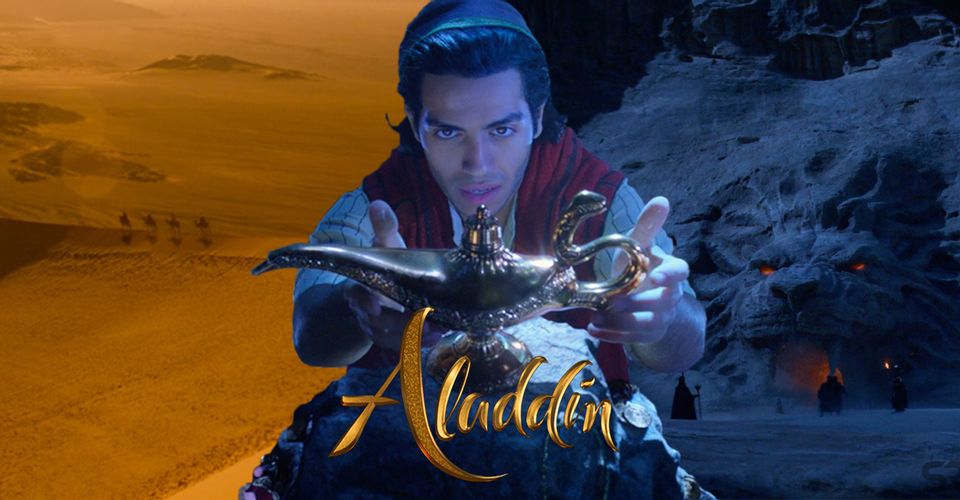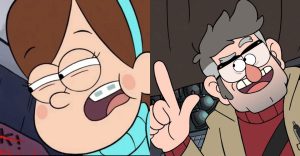Aladdin: 10 Things You Didn’t Know About The Cave Of Wonders

The Cave of Wonders is one of the more mysterious facets of Disney’s classic animated film Aladdin. Despite playing a pivotal role in the film’s events, very little is known about the ancient tiger-shaped chamber that houses the mystical lamp of the powerful Genie.
Though the film’s exposition does very little to explain the Cave of Wonders, there are tidbits of information and trivia scattered about different corners of the film industry and the internet that can help fans come to a greater understanding of the iconic Disney setpiece.
It Is Voiced By Frank Welker

After Jafar, Iago, and Gazeem discover the location of the hidden cave in one of the opening scenes of the film, they learn that their magical bounty is not only real but is a sentient gatekeeper to its own treasure, asking all who may seek its riches if they are truly worthy to pass the morality test upon entrance.
The voice for the Cave of Wonders was provided by longtime Disney associate Frank Welker. Welker is known for his voice acting work and is best recognized as the voice of Scooby and Fred from the Scooby-Doo franchise. Aladdin marked the first time that Welker voiced a real character in a Disney film, as he typically provided additional sounds for animals in their films, including the “voices” of Abu the monkey and Rajah the tiger.
The Voice Is Based On Sean Connery

Fans of the original film will no doubt remember the deep and grizzled voice of the Cave of Wonders, as it menacingly warned all who presented themselves to him that there was only one person who could survive entering the treasure trove. Though Frank Welker provided this iconic voice, he had a bit of inspiration in that area.
As a professional voice actor, Welker has several celebrity impersonations up his sleeve. One particular celebrity that he seems to draw inspiration from often is the legendary 007 actor Sean Connery. Though this is not the first time that Welker has paralleled Connery’s voice for a role, it is perhaps the most famous, as he took hints from the Scottish actor’s cadence to build the voice of the Cave of Wonders itself.
Shot In Jordan

The 2019 live-action remake sought to recapture the magic of the original film with modern filmmaking and new talent taking on the iconic roles. Despite the effort for a “more realistic” version of the story, most of the filming for the remake was not done on location, but on a set in England. However, one very important location simply required an extra dimension of realness.
In a short Instagram video with Mena Massoud (Aladdin), Naomi Scott (Jasmine), and director Guy Ritchie, Genie actor Will Smith revealed the filming location for the Cave of Wonder scenes, which were shot in and around Wadi Rum, Jordan. While the Cave of Wonders itself was digitally created, its surroundings were entirely real, adding a sense of realism to the magical scene.
Was A Peek At 3D Animation

Disney may have migrated its animation completely into 3D today, but it was once well known for its hand-drawn animated movies, like The Lion King, Cinderella, and Mulan. The classic ’90s family film Aladdin was another of these traditionally animated films, but it also featured a short sneak peek at the bright future of animation.
In the ’90s, Disney began to experiment with 3D Animation for certain scenes that would have been more difficult to animate if hand-drawn. As such, certain scenes in their movies took a sudden shift from the animation form previously used, presenting the viewers with a computer-generated, three-dimensional sequence. Such was the case for certain sequences of Aladdin’s escape from the cave. This marks one of the earliest uses of computer-generated graphics in a Disney film.
Created Of Clay

The Cave of Wonders is one of the most memorable locations in any of Disney’s classic films. Its iconic design sticks in the viewers’ minds and sets the stage for the harrowing events that are near to come for the protagonist of the movie as he enters the unknown.
In the commentary for the film, co-directors John Musker and Ron Clements, along with co-producer Amy Pell, revealed that the tiger head used for the Cave of Wonders was first sculpted with clay before being overlayed for its final animated version. This brought the Cave to life even more, helping to make it such an iconic piece of the Aladdin lore.
A Test Of Good And Evil

The difference between Aladdin and all others who attempted to enter into the Cave is that he has “worth that lies deep within,” rather than focusing on outward beauty and riches. It is this quality, among others, that makes Aladdin one of Disney’s best princes. However, the Cave’s test did not end upon Aladdin’s entrance.
The Cave of Wonders is the great tester of good and evil in the film, with the animators representing a battle between good and evil through different color palates within, using blue to signify good, like the Genie, and red to represent evil, like Jafar’s Genie form. The lamp’s chamber takes on the blue hue of good while a dastardly red ruby brings destruction.
It Has Been Visited By Indiana Jones

A mystical location like the Cave of Wonders is surely the object of pursuit for many travelers and explorers seeking excitement and riches. The film’s events see Jafar and Iago seek out the Cave in order to find the ancient lamp that housed the magical Genie, but they are far from the only famous fictional characters to find themselves at the doorstep of this cave.
At the Disneyland park in California, the Cave of Wonders is featured in the backdrop for the Aladdin show. This same stage and background were also used in the live show “Indiana Jones and the Secret of the Stone Tiger.” While the events of the show are far from canon in either the Aladdin or the Indiana Jones universe, it is still fun to imagine the mini-crossover that took place between the two franchises.
A Moratorium

In the first scene featuring the Cave of Wonders, the tiger-headed cavern devours a bandit named Gazeem as he attempts to enter at the behest of Jafar. This scene sets the stage for the stakes behind entering the cave, with Gazeem proving what happens when someone other than the “Diamond in the Rough” enters. However, there was originally more to the stories of those that came before Aladdin’s entrance into the cave.
In the original idea for the scene in which Aladdin takes the lamp from the cave, he would discover that the lamp on display was actually a fake, intended to ensnare those who sought to take it. He would discover frozen images of Gazeem and all others that entered the cave before him, who were not as savvy to the Cave’s tests.
Theories About The Creation

Aladdin is a classic of the Disney renaissance, which of course makes it the subject of plenty of fan theories regarding the events and characters therein. While many fan theories regarding Disney films border on ruining one’s childhood, some add to the story in a meaningful way.
One Reddit user, greenfingers559, suggests that the Cave of Wonders itself might have come into existence as a result of the final wish of the Genie’s previous master. This theory outlines the previous lampholder’s first two wishes as the riches found within the cave and the Magic Carpet respectively, before asking the Genie to protect his first two wishes until someone worthy came along.
Its Many Appearances

The Cave of Wonders may be known best for its appearance in the original Aladdin film. However, many fans may not realize that the Cave itself has appeared in other media aside from its film debut and the 2019 remake. Indeed, it has had numerous appearances thereafter.
Aside from its main two appearances, the Cave of Wonders has also shown up in other projects, including in an episode of ABC’s Once Upon A Time, an Aladdin video game tie-in, and several installments of the Kingdom Hearts video game franchise.
About The Author

















